& Construction

Integrated BIM tools, including Revit, AutoCAD, and Civil 3D
& Manufacturing

Professional CAD/CAM tools built on Inventor and AutoCAD

Integrated BIM tools, including Revit, AutoCAD, and Civil 3D

Professional CAD/CAM tools built on Inventor and AutoCAD
Transcript
00:03
InfoSurge Pro allows you to create hydraulic transients by providing a curve which will alter pump and valve operations,
00:10
as well as junction demand changes.
00:13
You can then compare the simulation results from different operational conditions.
00:18
In this example, you create transients from junction demand changes.
00:22
To begin, double-click the desired project .aprx file to open ArcGIS Pro.
00:29
Once the project starts, click the InfoWater Pro tab to open the InfoWater Pro ribbon.
00:35
In the Project panel, click Initialize.
00:38
From the Model Explorer, select Pump Operation Change.
00:42
In the Speed/Wicket Gate Change Data dialog, click Purge to remove all previously entered settings.
00:49
Next, create a curve to describe the junction demand over time.
00:54
For this example, use Junction 23.
00:57
From the map, zoom to and select Junction 23.
01:02
With the junction selected, from the Model Explorer, click the Demand Change button.
01:08
In the Junction Demand Change Data dialog, next to the Demand Change Curve drop-down, click Browse (…) to open the Curve dialog.
01:17
Click New to create a new junction demand change curve.
01:21
In the New ID field, enter “CUR5, Junction Demand Change” and then click OK.
01:27
Now, click the Set Rows button.
01:30
Set the value to 3, and then click OK.
01:34
In the table, enter the following values by assigning each X-axis value (time in seconds) in numerical order,
01:41
followed by the values in the Y-axis column (demand in gallons per minute).
01:46
In the X-column, enter: 0.00 in row 1
01:58
In the Y-column, enter: 150.00 in row 1
02:11
Note that the updated graph indicates that after the first two seconds,
02:15
the demand will increase from 150 to 1150 gallons per minute in one second.
02:21
Such a demand increase may indicate fire flow.
02:24
Click OK, and then, in the remaining dialog, select Create.
02:29
You are now ready to perform a surge analysis.
02:33
From the Model Explorer, click the Run Manager button.
02:37
Or, from the ribbon, InfoWater Pro tab, Analysis panel, click Run.
02:42
In the Run Manager dialog, click the Run button to perform a surge analysis, then click OK to close the dialog.
02:50
From the ribbon, View panel, click Report Manager.
02:55
In the Report Manager dialog, click New.
02:59
In the Output Report/Graph dialog, under Available Output Sources, make sure *Active*.Surge is selected.
03:07
From the Graph Report tab, pick Surge Node Graph, and then click Open.
03:12
Now, select Junction 23 to view its pressure profile during the transient event.
03:18
Close the Report Manager.
03:20
Next, run a surge analysis with a long junction demand change time.
03:25
Again, select Junction 23.
03:28
From the Model Explorer, click the Demand Change button to open the Junction Demand Change Data dialog.
03:35
Next to the Demand Change Curve field, click Browse (…) to open the Curve dialog.
03:40
With the CUR5 curve ID selected, in the X-column, change the value in the third row to 12.00.
03:48
This increases the demand change time from one to 10 seconds.
03:52
Click OK to close the dialog.
03:54
Then, in the Junction Demand Change Data dialog, click Update.
03:59
Now, reopen the Run Manager dialog and run another surge analysis.
04:05
Click OK when the analysis is complete to close the dialog.
04:11
Then, open the Report Manager and refresh the output results to view them.
04:16
While there is still a transient event, allowing a slower rate of demand increase greatly reduced the pressure surge.
04:23
Close the Report Manager when you finish reviewing the results.
Video transcript
00:03
InfoSurge Pro allows you to create hydraulic transients by providing a curve which will alter pump and valve operations,
00:10
as well as junction demand changes.
00:13
You can then compare the simulation results from different operational conditions.
00:18
In this example, you create transients from junction demand changes.
00:22
To begin, double-click the desired project .aprx file to open ArcGIS Pro.
00:29
Once the project starts, click the InfoWater Pro tab to open the InfoWater Pro ribbon.
00:35
In the Project panel, click Initialize.
00:38
From the Model Explorer, select Pump Operation Change.
00:42
In the Speed/Wicket Gate Change Data dialog, click Purge to remove all previously entered settings.
00:49
Next, create a curve to describe the junction demand over time.
00:54
For this example, use Junction 23.
00:57
From the map, zoom to and select Junction 23.
01:02
With the junction selected, from the Model Explorer, click the Demand Change button.
01:08
In the Junction Demand Change Data dialog, next to the Demand Change Curve drop-down, click Browse (…) to open the Curve dialog.
01:17
Click New to create a new junction demand change curve.
01:21
In the New ID field, enter “CUR5, Junction Demand Change” and then click OK.
01:27
Now, click the Set Rows button.
01:30
Set the value to 3, and then click OK.
01:34
In the table, enter the following values by assigning each X-axis value (time in seconds) in numerical order,
01:41
followed by the values in the Y-axis column (demand in gallons per minute).
01:46
In the X-column, enter: 0.00 in row 1
01:58
In the Y-column, enter: 150.00 in row 1
02:11
Note that the updated graph indicates that after the first two seconds,
02:15
the demand will increase from 150 to 1150 gallons per minute in one second.
02:21
Such a demand increase may indicate fire flow.
02:24
Click OK, and then, in the remaining dialog, select Create.
02:29
You are now ready to perform a surge analysis.
02:33
From the Model Explorer, click the Run Manager button.
02:37
Or, from the ribbon, InfoWater Pro tab, Analysis panel, click Run.
02:42
In the Run Manager dialog, click the Run button to perform a surge analysis, then click OK to close the dialog.
02:50
From the ribbon, View panel, click Report Manager.
02:55
In the Report Manager dialog, click New.
02:59
In the Output Report/Graph dialog, under Available Output Sources, make sure *Active*.Surge is selected.
03:07
From the Graph Report tab, pick Surge Node Graph, and then click Open.
03:12
Now, select Junction 23 to view its pressure profile during the transient event.
03:18
Close the Report Manager.
03:20
Next, run a surge analysis with a long junction demand change time.
03:25
Again, select Junction 23.
03:28
From the Model Explorer, click the Demand Change button to open the Junction Demand Change Data dialog.
03:35
Next to the Demand Change Curve field, click Browse (…) to open the Curve dialog.
03:40
With the CUR5 curve ID selected, in the X-column, change the value in the third row to 12.00.
03:48
This increases the demand change time from one to 10 seconds.
03:52
Click OK to close the dialog.
03:54
Then, in the Junction Demand Change Data dialog, click Update.
03:59
Now, reopen the Run Manager dialog and run another surge analysis.
04:05
Click OK when the analysis is complete to close the dialog.
04:11
Then, open the Report Manager and refresh the output results to view them.
04:16
While there is still a transient event, allowing a slower rate of demand increase greatly reduced the pressure surge.
04:23
Close the Report Manager when you finish reviewing the results.
InfoSurge Pro allows hydraulic transients to be created by providing a curve to alter pump and valve operations, as well as junction demand changes. Then, the simulation results from different operational conditions can be compared. In this example, transients are created from junction demand changes.
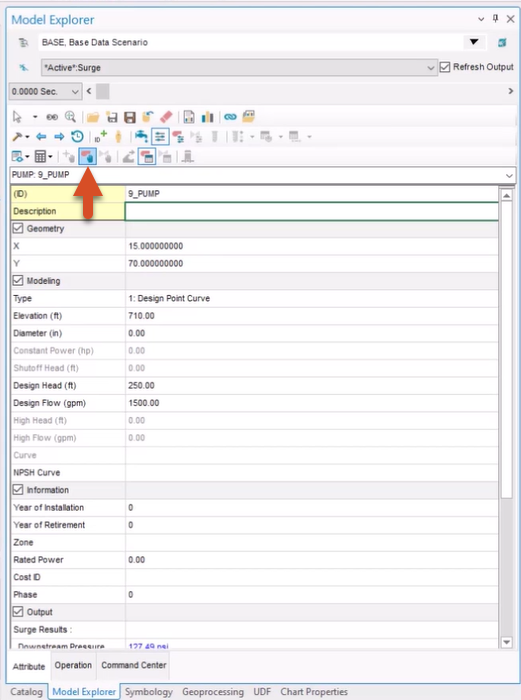
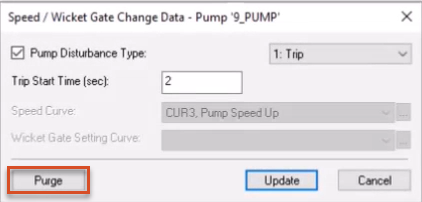
Next, create a curve to describe the junction demand over time. For this example, use Junction 23.
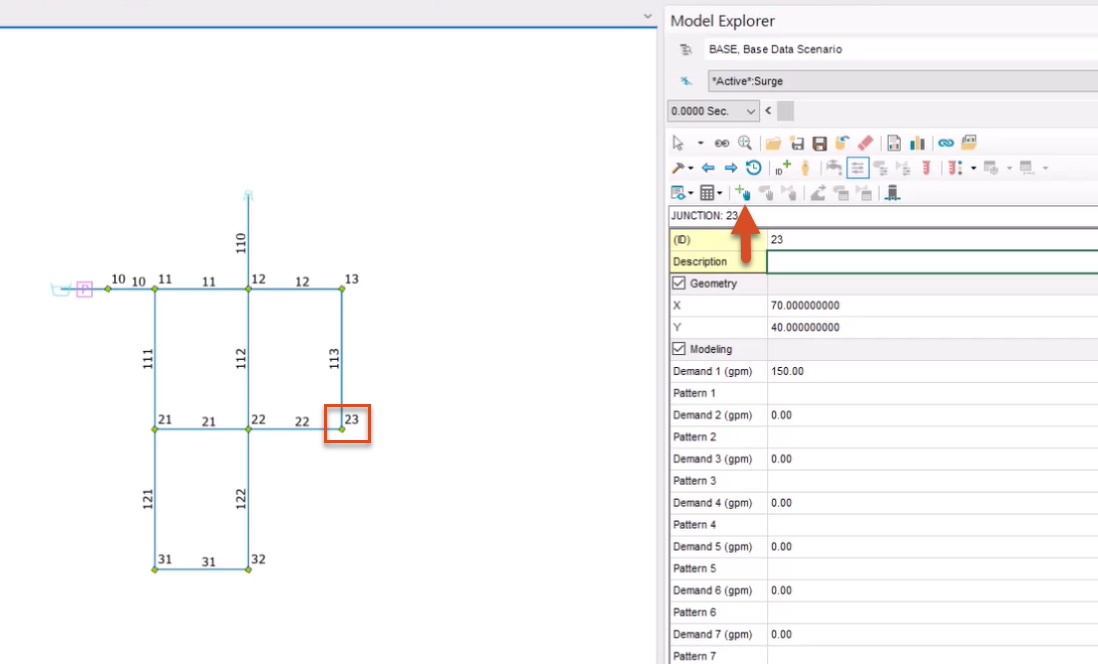
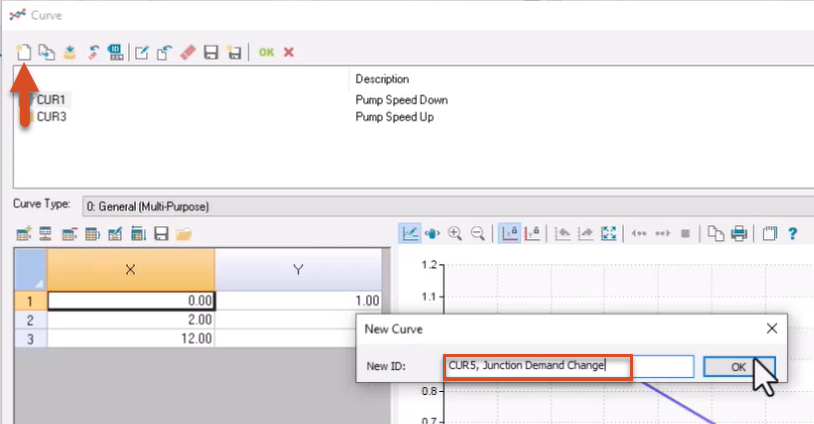

In the table, enter the following values in the X-axis column (time in seconds):
Enter the following values in the Y-axis column (demand in gallons per minute):
Note that the updated graph indicates that after the first two seconds, the demand will increase from 150 to 1150 gallons per minute in one second. Such a demand increase may indicate fire flow.
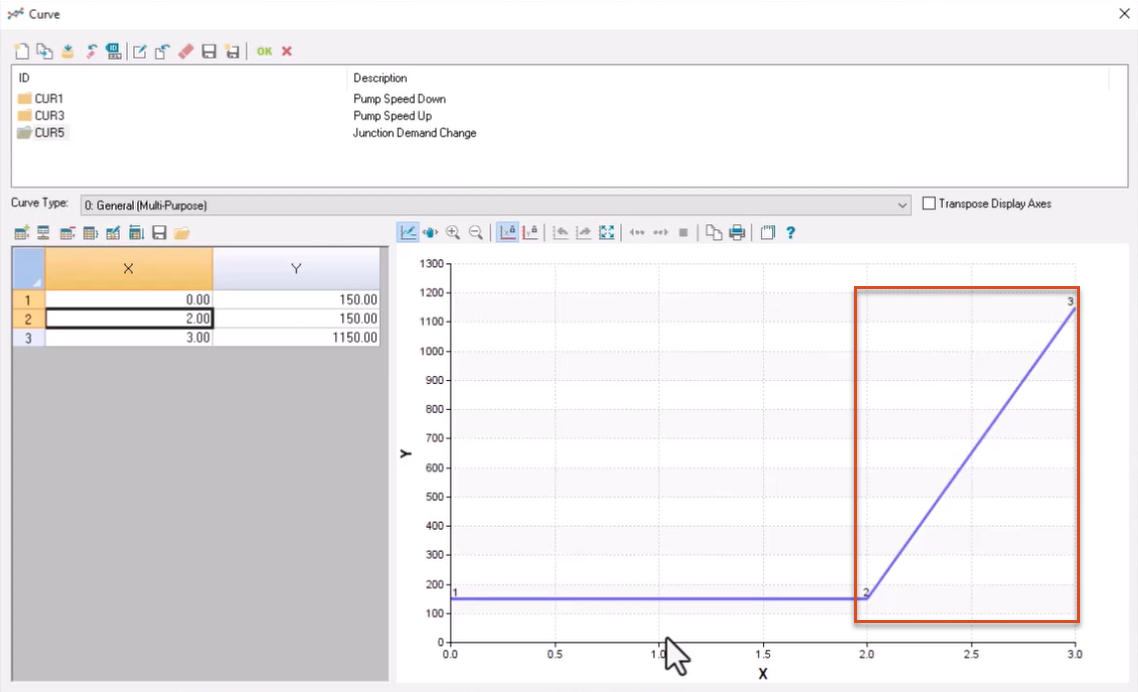
A surge analysis can now be performed.
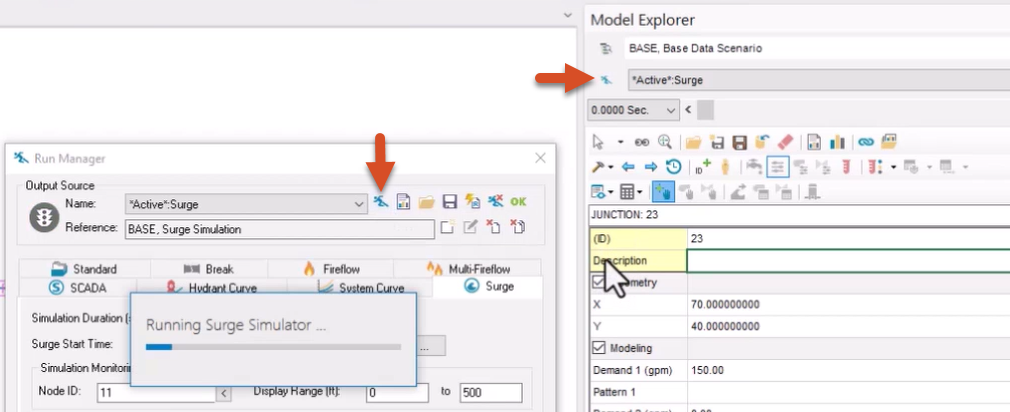
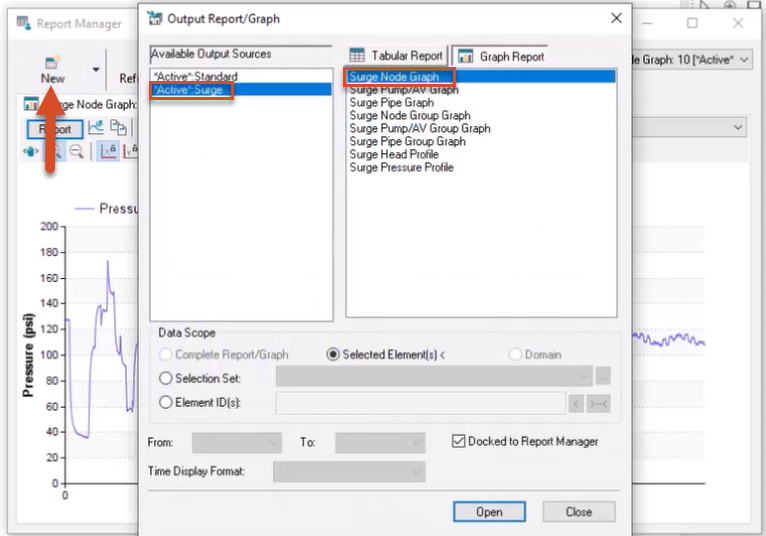
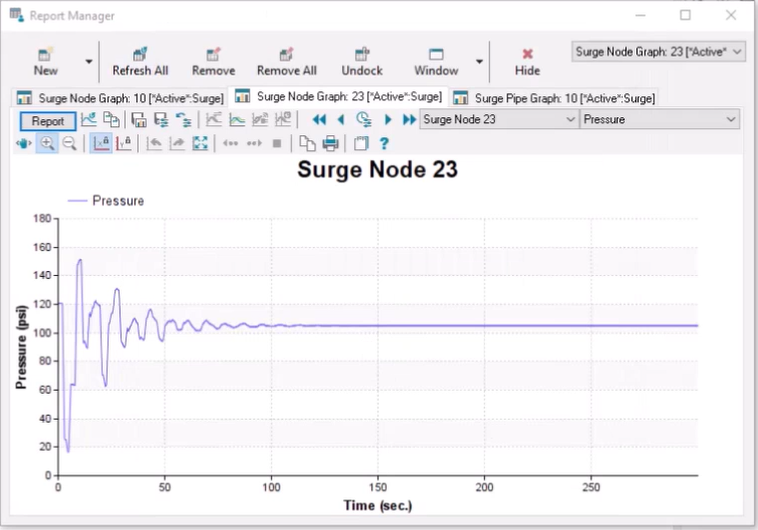
Next, run a surge analysis with a long junction demand change time.
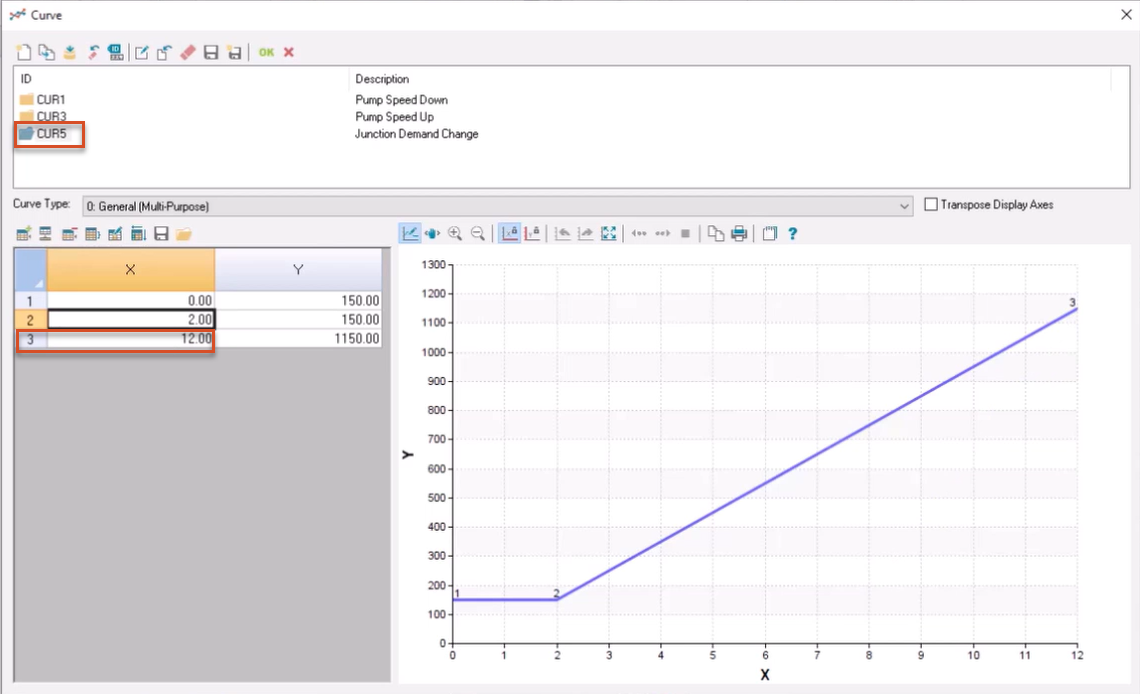
This increases the demand change time from 1 to 10 seconds.
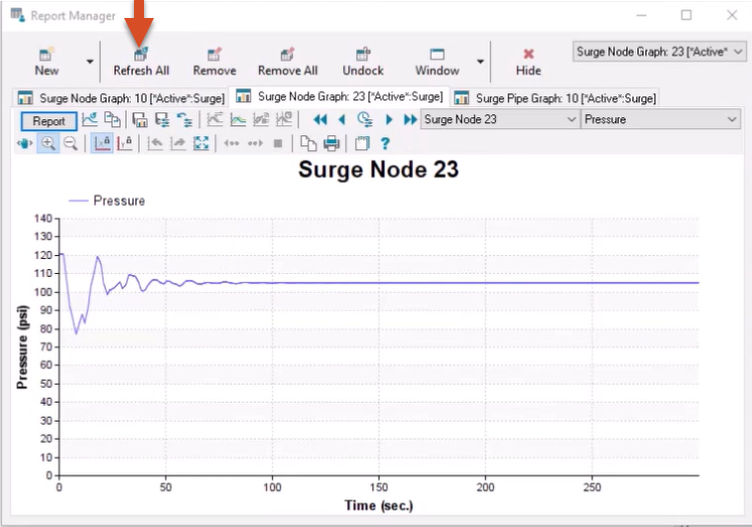
While there is still a transient event, allowing a slower rate of demand increase greatly reduce the pressure surge.
How to buy
Privacy | Do not sell or share my personal information | Cookie preferences | Report noncompliance | Terms of use | Legal | © 2025 Autodesk Inc. All rights reserved
Sign in to start learning
Sign in for unlimited free access to all learning content.Save your progress
Take assessments
Receive personalized recommendations
May we collect and use your data?
Learn more about the Third Party Services we use and our Privacy Statement.May we collect and use your data to tailor your experience?
Explore the benefits of a customized experience by managing your privacy settings for this site or visit our Privacy Statement to learn more about your options.